Ivy is more than just "Any of a genus of climbing or trailing plants having lobed or evergreen leaves." This usually means the ubiquitous English Ivy (Hedera helix) which is grown indoors as an ironclad house plant or outdoors mainly as a groundcover. English Ivy is a native to Europe, North Africa and Western Asia. Besides English Ivy, there are actually two other hardy species of vines known as ivies that are common in Greater Kansas City.
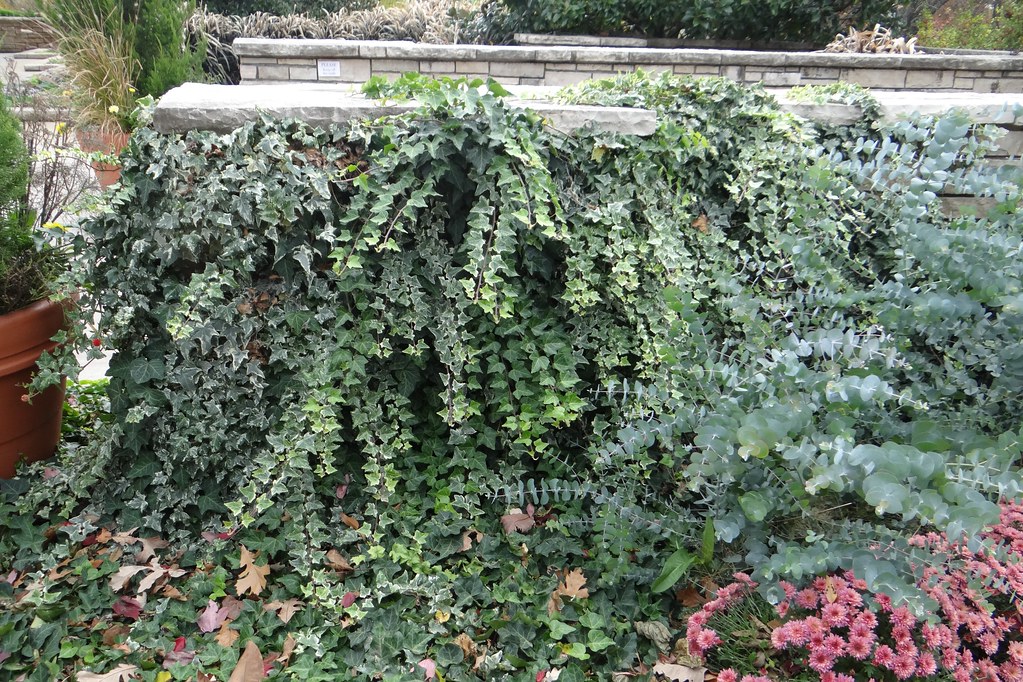
Here is a picture of Powell Gardens' Visitor Center terrace walls cloaked in English Ivy cultivars. These plants survived from a past seasonal display and look nice as a backdrop to the bed outside Perennial Gifts. They are the cute juvenile form of English Ivy often used as house plants too. Recent mild winters have allowed them to thrive, including a more tender variegated variety. We have had to reduce their size by two-thirds this season.
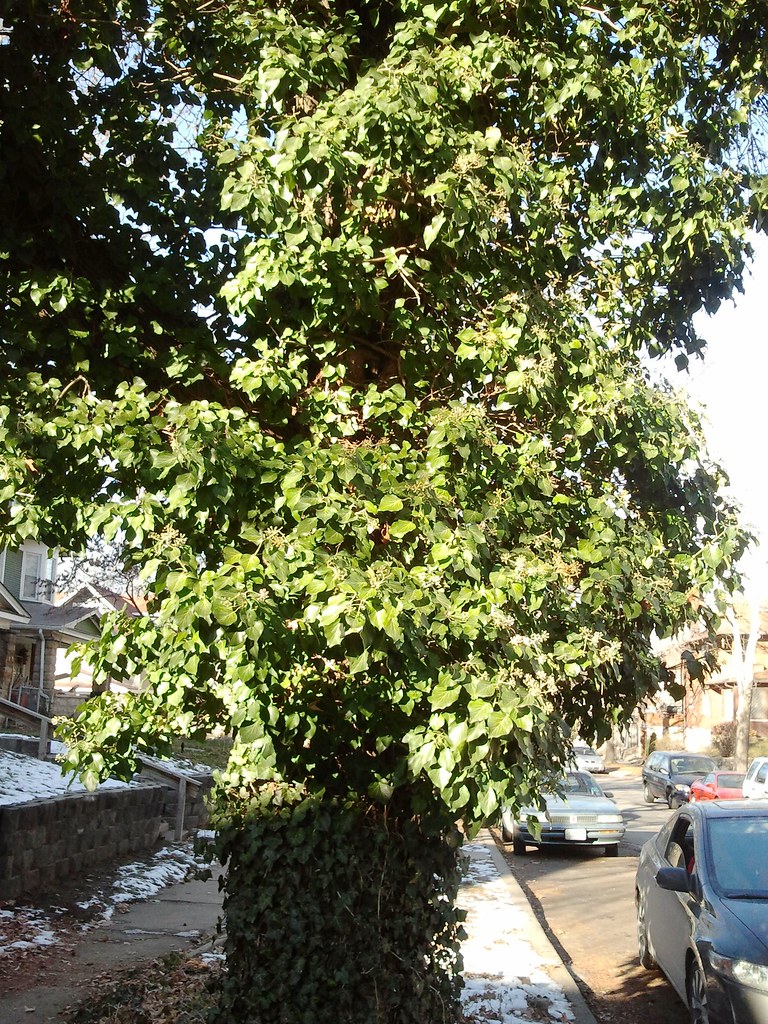
This is another image of English Ivy! Here it is engulfing a street tree in Kansas City. It has morphed into the adult form of English Ivy with larger leaves and actually blooms.
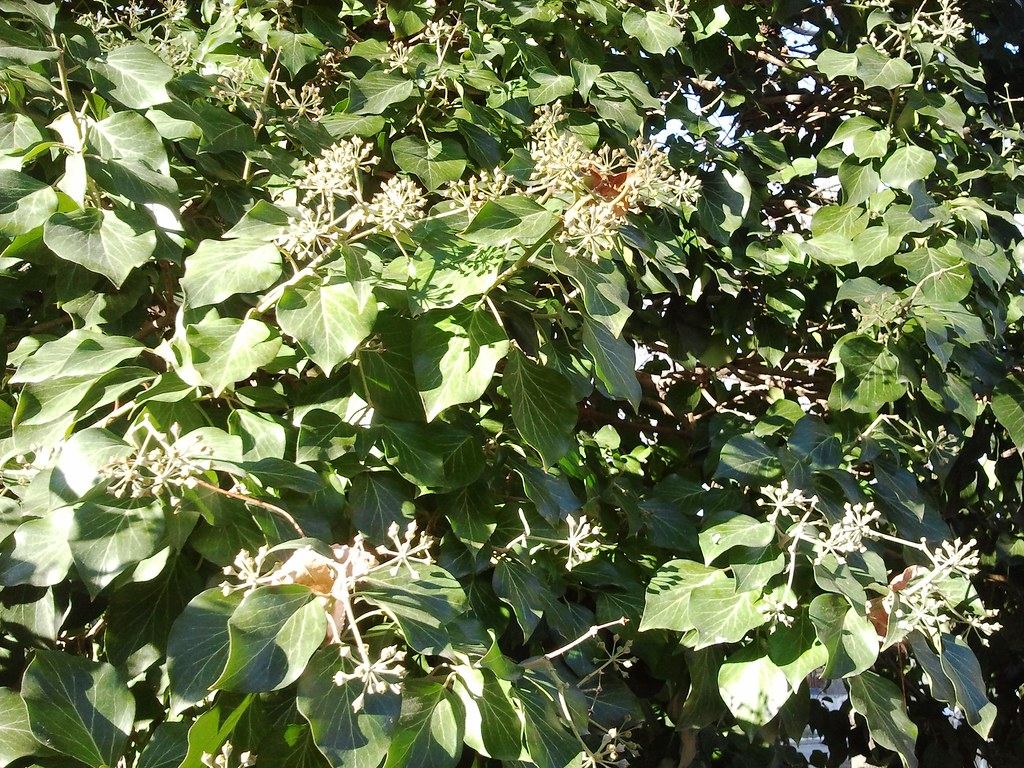
Here is a closeup of the adult English Ivy showing the clusters (umbels) of fall's spent flowers which will develop into quarter inch black fruits in spring. Well, we hope not! The flowers bloom late in fall and are nectar rich for the last of the season's butterflies and bees. Usually an arctic cold snap freezes them off in our climate. Recently they have been successfully flowering and with MILD winters they are even setting fruit. The fruits ripen in spring and birds pass them far and wide and if this continues, English Ivy may need to be added to the invasive species list for our region.
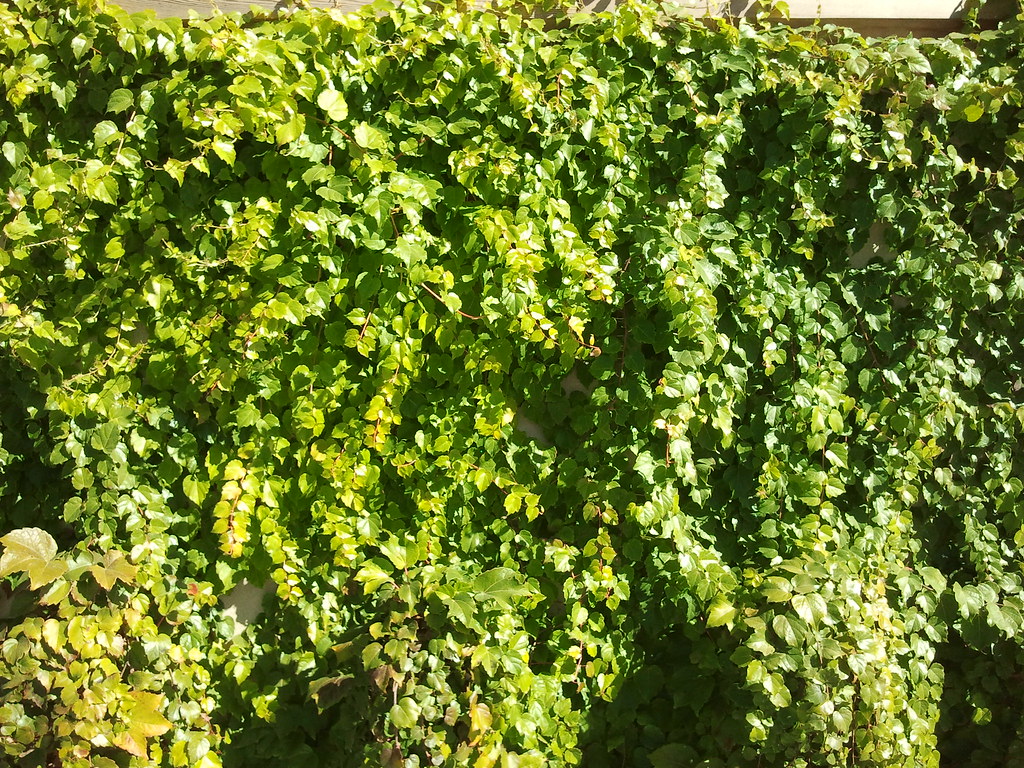
Here's another "Ivy" commonly planted in our region: it's the Boston Ivy (Parthenocissus tricuspidata). This picture was taken on a wall in Kansas City. Boston Ivy is not native to Boston but comes from Central China to Japan. It is the ivy of Harvard and Wrigley Field! It is a close relative to our beautiful native Virginia Creeper (P. quinquefolia). Go to England -- say Oxford and you will find our native Virginia Creeper! Why do we always want the exotic?

Boston Ivy produces abundant blue berries in the fall just like our native Virginia Creeper (photo from Kansas City). Birds like these just the same as our native Virginia Creeper's fruit. I was never alarmed by this until our Horticulturist Matt Bunch alerted me of all the seedlings he had to remove while he was managing the Discovery Center landscape. Matt also pulls many seedlings from his urban home landscape.
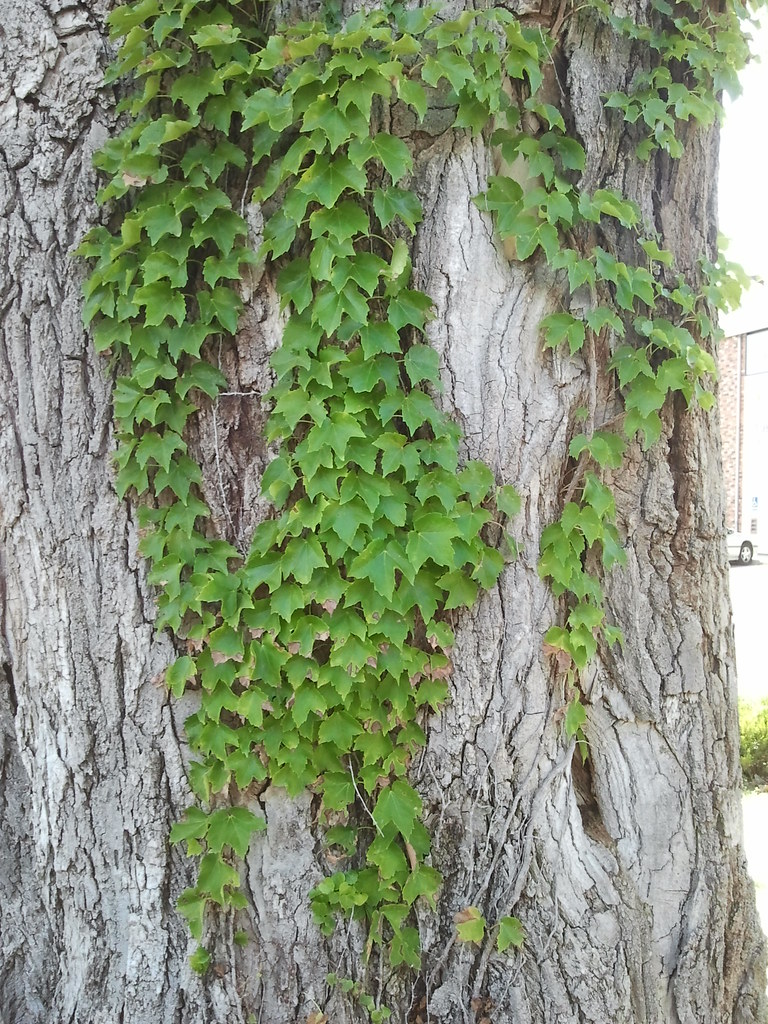
Here's a picture of Boston Ivy growing wild on a native Cottonwood tree. For this reason Powell Gardens made the decision several years ago to remove its few Boston Ivy plants as we have seen they have proven invasive plant potential in our region. Grow Native! Choose Virginia Creeper instead which has far more colorful autumn color and is host to a wealth of great insects including several spectacular sphinx moths.
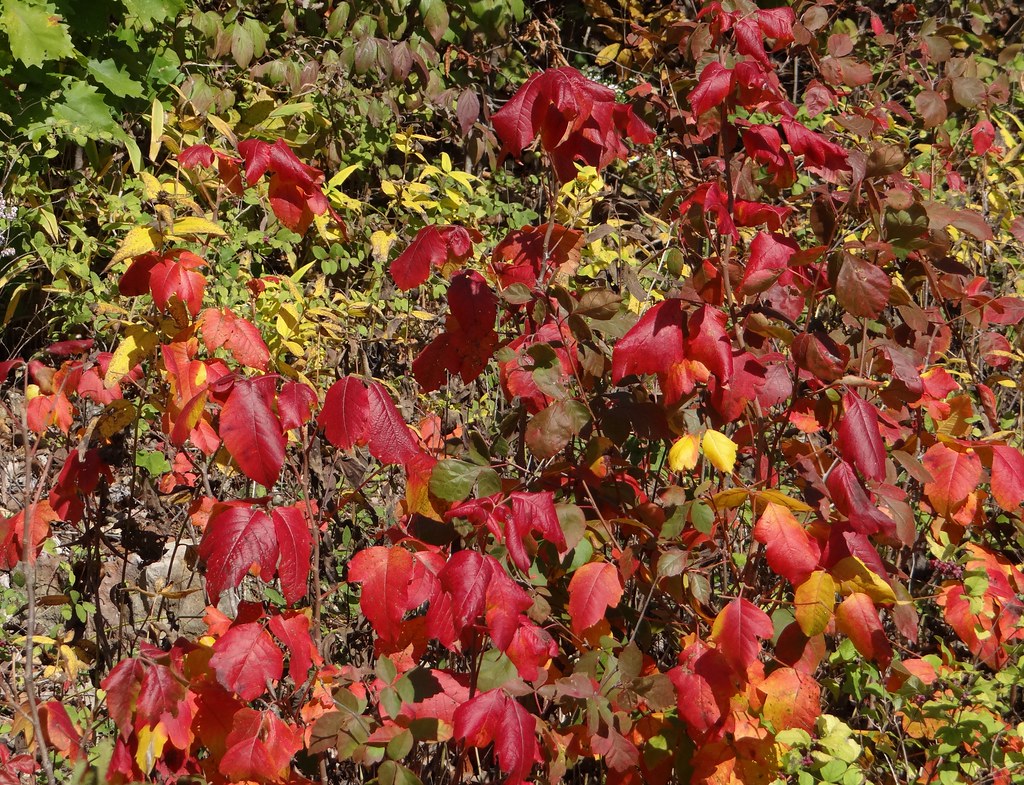
This plant with gorgeous fall color is the final and only native "ivy" of our region: Poison-IVY (Toxicodendron radicans). This plant may make readers shudder. I used to be quite immune to its toxic oil urushiol that causes contact dermatitis but sometimes I think I can get it just by looking at it (which is not true -- it must come in contact with your skin). I know Poison-Ivy is a native plant with beautiful fall color. We remove this plant from Powell Gardens wherever it could pose a hazard to Visitors. We let it be in the wilds of the site because it really is beautiful in the fall and....
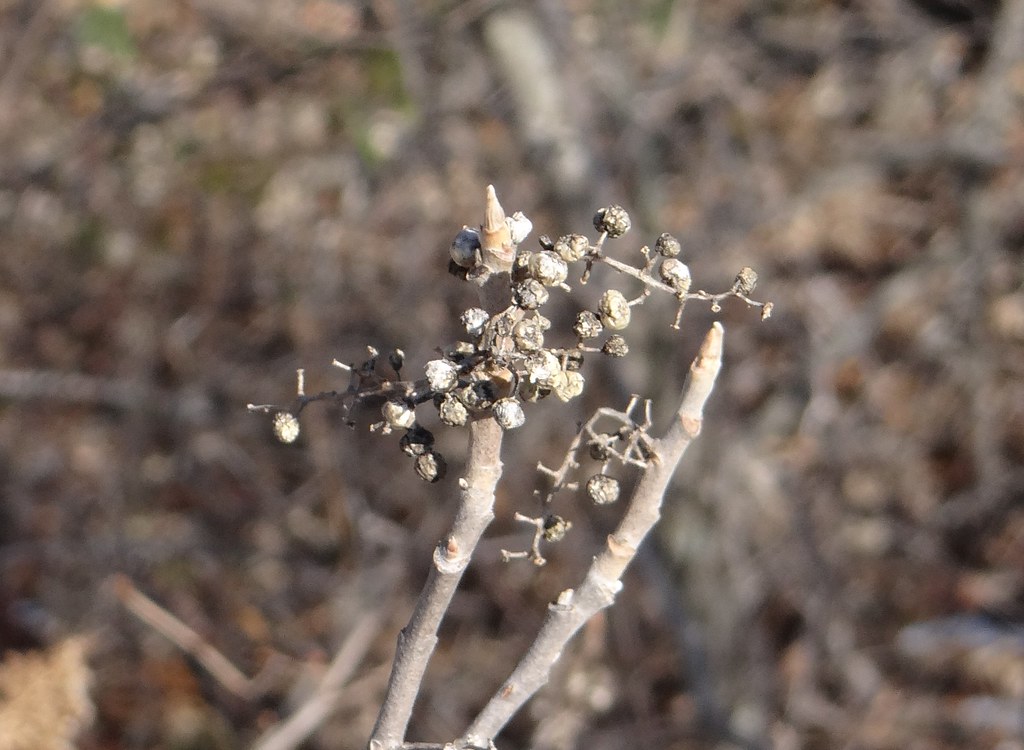
The best thing about Poison-ivy are these whitish berries (photo taken today). The fruit are one of the best things about this plant because they are a favorite winter food for many, many species of birds from our state bird the Eastern Bluebird to Yellow-rumped Warblers and Ruby-crowned Kinglets. I have seen everything from huge Pileated Woodpeckers to Dark-eyed Juncos feeding on them. Yes, all those birds spread poison-ivy far and wide but it is part of our natural ecosystem with a plethora of wild creatures from moths to birds and deer feasting on its bounty. As a bird lover, I keep the vine in my woods but do pull all the bird planted seedlings in my garden beds. I simply use a plastic bag over my hand and dump them in the compost.
So that's our league of ivy and a good reason to learn botanical names rather than common names. All three plants bare the same common name but are completely unrelated. Poison-Ivy is in the Cashew Family (Anacardiaceae) related to cashews, sumac, smoketrees and mangoes. English Ivy is in the Aralia Family (Araliaceae) related to Sarsaparilla, Ginseng and Devil's Walking Stick. Boston Ivy in the Grape Family (Vitaceae). with Virginia Creeper and the world's grapes as relatives.
Friday, January 4, 2013
Our League of Ivies
Posted by
Kansas City's botanical garden
at
3:13 PM
0
comments
![]()
![]()
Subscribe to:
Posts (Atom)

